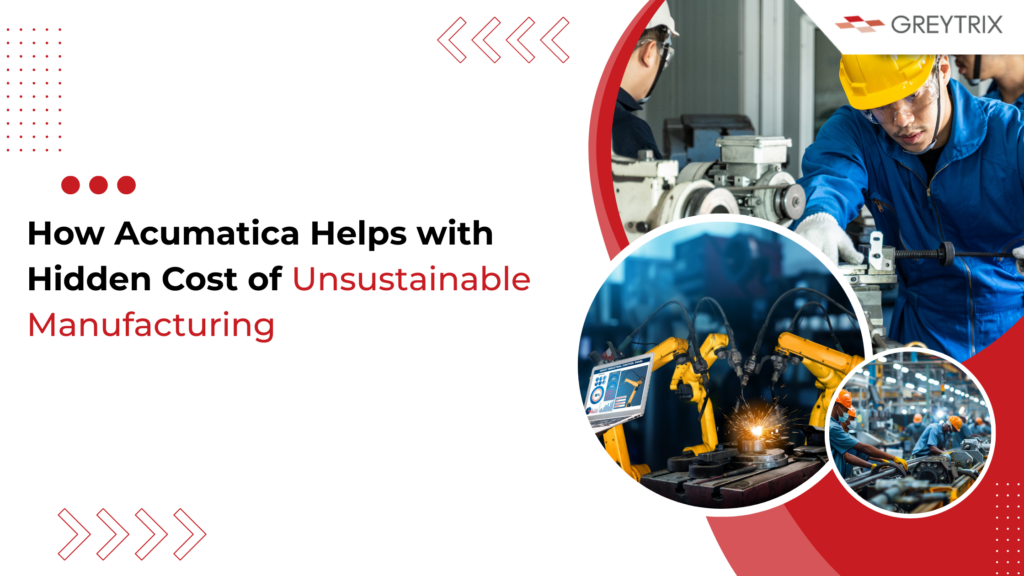
In 2025, sustainability has moved from a CSR checkbox to a direct driver of profitability and competitiveness. With global regulations tightening, energy markets remaining volatile, and customer expectations rising, unsustainable practices are no longer hidden costs — they are visible profit leaks.
For manufacturers, this shift is sharper than ever. Every kilowatt wasted, every truck sent half-full, and every pile of unused raw materials isn’t just bad for the planet, it’s eating into margins. And with global regulations tightening around emissions, energy efficiency, and resource utilization, the true cost of unsustainable practices is showing up on balance sheets with alarming clarity.
The uncomfortable truth? Unsustainable manufacturing is hitting profits harder in 2025 than it ever has before.
Why the Pressure Is Rising:
Let’s start with the basics: what exactly is unsustainable manufacturing?
At its core, it’s the failure to optimize resources, whether that’s energy, raw materials, labour, or even time. A poorly planned production cycle, for example, can create waste at multiple levels:
- Idle machines translate into double-digit increases in energy costs per unit
- Excess inventory piling up in warehouses, tying up capital and storage costs.
- Rework caused by misaligned processes, leading to wasted labour and raw inputs.
In 2025, the stakes are higher because three major trends are colliding:
- Rising energy costs: Global energy markets remain volatile, making wasteful processes far more expensive.
- Regulatory tightening: Governments are issuing stricter emission control mandates and slapping fines on companies that don’t comply.
- Customer expectations: End-users and B2B buyers alike are prioritizing sustainable supply chains. A “green gap” in your operations could easily send contracts to competitors.
The Hidden Ways Profits Leak
Unsustainable practices don’t always look dramatic. They’re silent killers.
Case in Point: Profitability Through Sustainability
Imagine two manufacturers in the same sector.
- Manufacturer A still relies on outdated, siloed systems. They overstock raw materials “just in case,” run half-loaded shipments, and use paper trails for approvals. On paper, they’re running “fine,” but their operating costs creep higher every quarter.
- Manufacturer B has shifted to Acumatica Manufacturing Edition. With accurate demand forecasts, they produce only what’s needed. Their supply chain is fully visible, reducing surprises. Their approvals are automated, and their production schedules minimize energy use. The result? Lower overhead, fewer penalties, and stronger margins.
Both companies are in the same market, but one is bleeding profits due to unsustainable practices and the other is thriving because they’ve embraced smarter systems.
Why Sustainability Equals Profitability
Here’s the shift manufacturers need to embrace: sustainability is not just about saving the planet; it’s about saving money. Reducing waste means lowering input costs. Optimizing energy use means fewer overheads. Digitizing workflows means cutting out expensive errors. It’s not altruism, it’s operational intelligence.
Manufacturers who’ve embedded sustainability into their core processes report higher margins, stronger compliance, and better resilience against disruptions. And they’re not doing it by chance they’re using technology as the foundation.
Enter Acumatica: A Smarter Approach to Manufacturing
This is where solutions like Acumatica Manufacturing Edition come into play. Unlike traditional ERP platforms that simply track production numbers, Acumatica ERP for manufacturing is designed to address inefficiencies and embed sustainability right into daily operations.
Let’s break it down:
1. Smarter Resource Planning
Overstocking raw materials used to be considered “safe.” In 2025, it’s a liability. Time-phased planning in Acumatica for manufacturing ensures raw materials arrive exactly when needed — no sooner, no later. That means reduced carrying costs, fewer stock write-offs, and less wasted storage energy.
2. End-to-End Visibility
Siloed systems hide inefficiencies. With Acumatica Manufacturing ERP, production, inventory, and finance are fully connected. Managers can see, in real-time, where resources are being wasted, whether it’s energy-draining machine runs or materials being double-ordered.
3. Supply Chain Accountability
Regulators are now scrutinizing not just your factory, but also your suppliers. Acumatica Manufacturing gives you the data transparency to ensure every step of your supply chain is compliant, reducing the risk of fines and reputational damage.
4. Sustainable Workflows
Paper-based reporting isn’t just outdated — it’s wasteful. Automated workflows in Acumatica Manufacturing Edition cut down manual errors, speed up approvals, and eliminate reams of unnecessary paperwork.
5. Data-Driven Decision-Making
By embedding analytics into every transaction, Acumatica ERP for manufacturing provides actionable insights. Whether it’s recalibrating machine schedules for energy efficiency or balancing supply with demand, you make decisions backed by hard data, not guesswork.
Final Thoughts
Sustainability isn’t just the moral path. It’s the profitable one.
The old belief that “sustainability slows down production” is dead. In fact, the opposite is true. Sustainable operations are leaner, faster, and more cost-effective.
By adopting platforms like Acumatica for manufacturing, businesses can finally bridge the gap between profitability and responsibility. It’s not about choosing one over the other anymore, it’s about realizing they’ve always been the same thing.
So, the next time you see sustainability headlines, don’t think “extra work.” Think “extra profit.” Because in 2025, ignoring sustainability isn’t just bad for the planet, it’s bad business.
